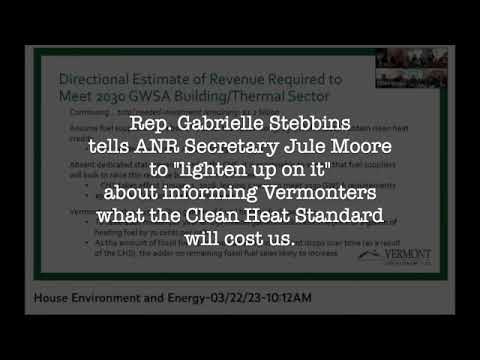Rep. tells ANR Secretary to “lighten up” on informing citizens about cost of Clean Heat Standard
Vermont’s Secretary of Natural Resources, Julie Moore, incurred the ire of Clean Heat Standard (S.5) supporters when, in late January, she presented the Senate Committee on Natural Resources & Energy with her estimate that their bill would result in an additional $0.70 charge (carbon tax) on home heating fuels. Advocates for the program that would force…
Keep reading with a 7-day free trial
Subscribe to Behind the Lines: Rob Roper on Vermont Politics to keep reading this post and get 7 days of free access to the full post archives.



